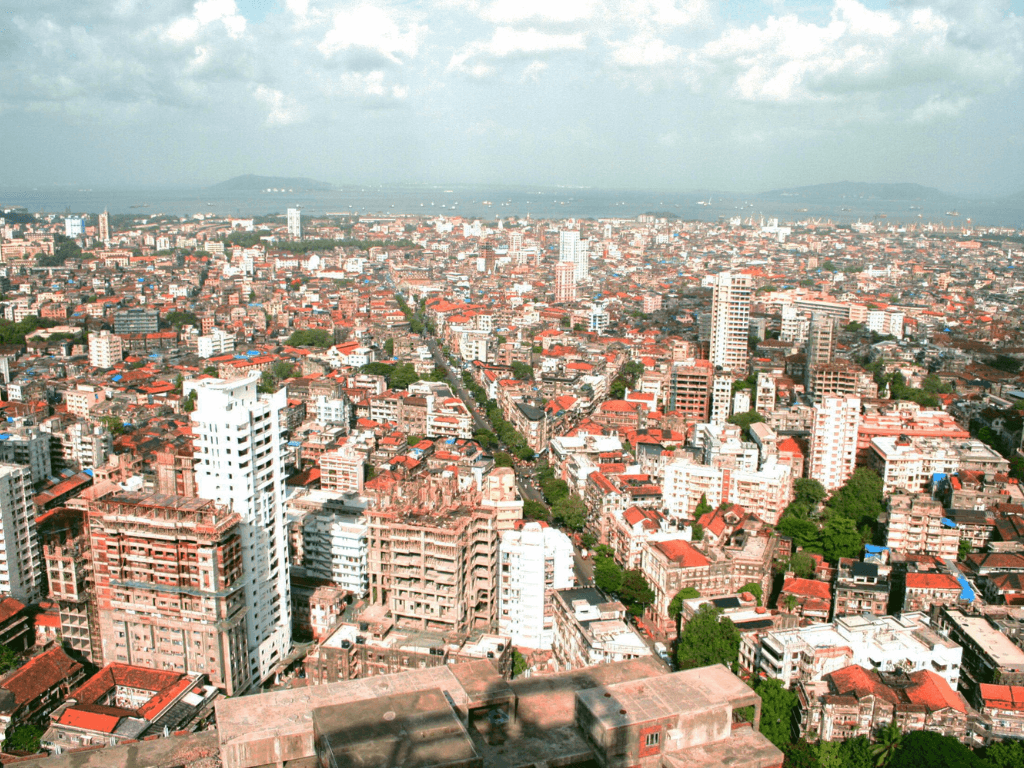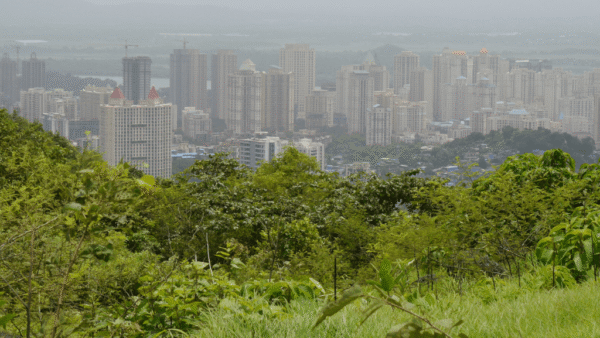In cities, land is the most precious commodity of all. It is, to quote the philosopher Karl Marx, “the original source of all wealth” which defines and deeply influences social and political life. The way land is utilised or developed also defines the built form and environment of a city. Land occupation and use are, therefore, highly contested. Increasingly, we see that while the majority of people struggle for shelter, amenities and equity, private players successfully exercise control over land to expand their turnover and profit. Overturning this burden of exclusion, marginalisation and deprivation of the majority of people and de-colonising land to make cities equal and just for all demands a paradigm shift from the prevailing order.
The use and value of land, in the larger public interest, must be assessed by a seemingly simple yardstick – the extent to which it serves the fundamental right of access to various needs of the maximum number of people, especially the marginalised who constitute the overwhelming majority in cities. For example, in Mumbai, they are 75-80 percent of the city’s population; similarly in other cities. Nearly half of Mumbai’s population lives in inhospitable and environmentally-degraded and oppressive slums. These occupy just 7.3 percent of Mumbai’s total land or 15 percent of developable land,[1] which produces terrible quality of life, adversely impacting the nature of the city.
Equal and just distribution of land which facilitates access to a better quality of life, through development and redevelopment, must be the single-most important commitment of democratically elected governments. On the contrary, land use and city planning in India’s cities in the decades after the economic liberalisation in 1991 have been blatantly discriminatory, regressive, and detrimental to the larger public good. This approach has led to the marginalisation of the majority which manifests as, but not limited to, lack of dignified housing, amenities, open spaces, inadequate services.
From the ideological framework that determines land use to the plans and policies enacted for its implementation and the everyday access that people have or not, land use is the most critical aspect of urbanisation. It is, in fact, the motherboard on which the process of urbanisation unfolds.
From India’s independence till liberalisation, the approach was to expand public land reserves by acquiring privately-owned land, despite conflicts and contradictions in the acquisition. Land, as well as other resources, were considered common property and used for government-led public interest projects. In 1976, the Indira Gandhi government introduced the progressive Urban Land Ceiling and Regulations Act (ULCRA) to take over surplus land held by a few for the larger good, particularly for affordable public housing and amenities. Accordingly, government agencies were mandated to prepare land use and development plans of cities which, despite their shortcomings and contradictions, were opened to public scrutiny.
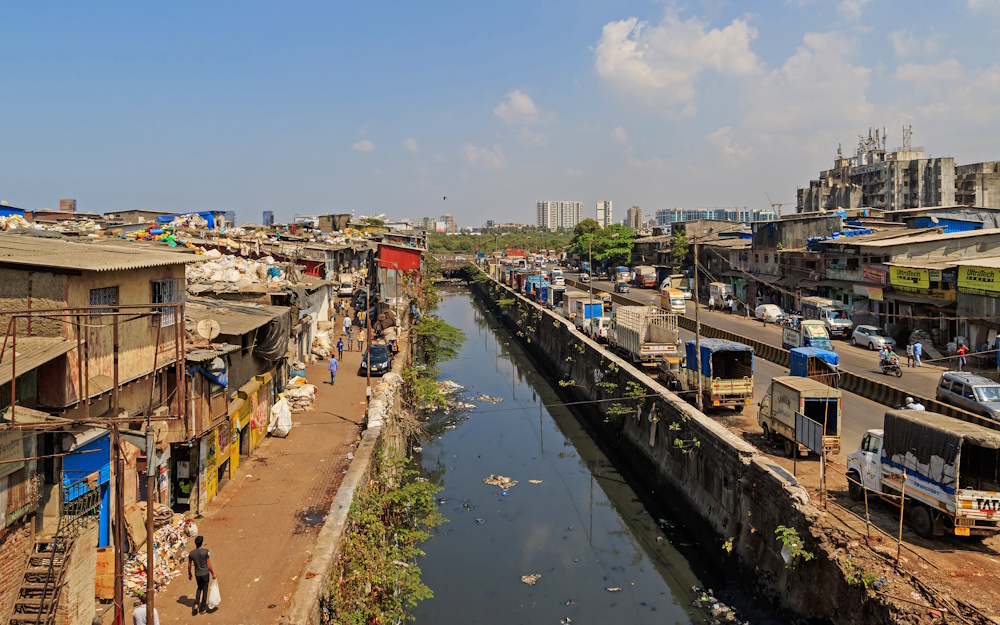
Photo: Wikimedia Commons
In general, planning can be elitist. It emphasises zoning which segregates activities and people to achieve uniformity instead of diversity in people’s lives, and it makes for regimented governance and regulatory control over people and places. This disassociates people from their city and stunts their thinking about it. Importantly, such top-down land use planning is the opposite of integrated, mixed-use, and people-led planning that potentially facilitates inclusion through participation, interaction, formation of networks and collectives to suggest solutions and to re-imagine their habitation and the city.
This helps to deepen community relationships, evolve common demands, and exert pressure on authorities in decisions that affect their lives. Such a process, based on socialist ideology, allows rights-based demands and engagement from people, even protests.
Disinvestment illusion
Such political space, despite its limitations, was critical to decision-making about land use but, after 1991, began to shrink. In its place emerged private agencies or autonomous authorities with no representation of people. These were entrusted, by elected governments, to undertake various kinds of work including determining land use. The political objective shifted to governments playing the role of a facilitator for private interests.
In land use, this has come to mean handing out public land, for ridiculously low sums, or often free, to private agencies to implement projects promoted as public interest projects. Over decades, this exercise has helped the profit turnover of private developers while inflicting colossal losses on the public exchequer. The undermining and eventual end of ULCRA, well-intended but unsuccessfully implemented, through legal interventions by landowners and real estate developers who did not want to relinquish control over land, is a part of this piece. When ULCRA was repealed in Maharashtra in 2007,[2] it was a classic case of throwing out the baby with the bathwater.
Thus, elected governments presided over privatised and profit-oriented land use setting up an active process of depletion of public resources. This was a divestment by governments in the true sense. Interestingly, in 1999, the then Prime Minister Atal Bihari Vajpayee introduced a separate Ministry for Disinvestment, headed by Arun Shourie. The idea of disinvestment of public resources, especially land, has since defined the political objective of the state.
In doing so, governments have divested people’s power that they represent to private agencies. It’s as if governments and institutions own the land which they, at their will, sell or gift or donate to private players. In Mumbai’s Dharavi redevelopment model, for instance, the agreement between the state government and the private developer, provides for a meagre 20 percent of the revenue—in cash or buildings—as government share despite the government providing land virtually free. The developer will pay a premium of only 20 percent of the Ready Reckoner rate while the government will pick up the bill for infrastructure—a colossal loss to the public exchequer especially as the cost of land and infrastructure constitute 50-70 percent of the cost of real estate projects.
Development at the cost of fast-expanding privatisation of land is equated with successful implementation of projects. Privatisation has become synonymous with development and more important than democratic values. As a result, land use has become highly discriminatory and exclusionary of people’s needs and rights. The reservations in the development plans of cities are changed at the will of private developers. Governments and statutory planning bodies have quietly and nearly relinquished their responsibility of planning land use.
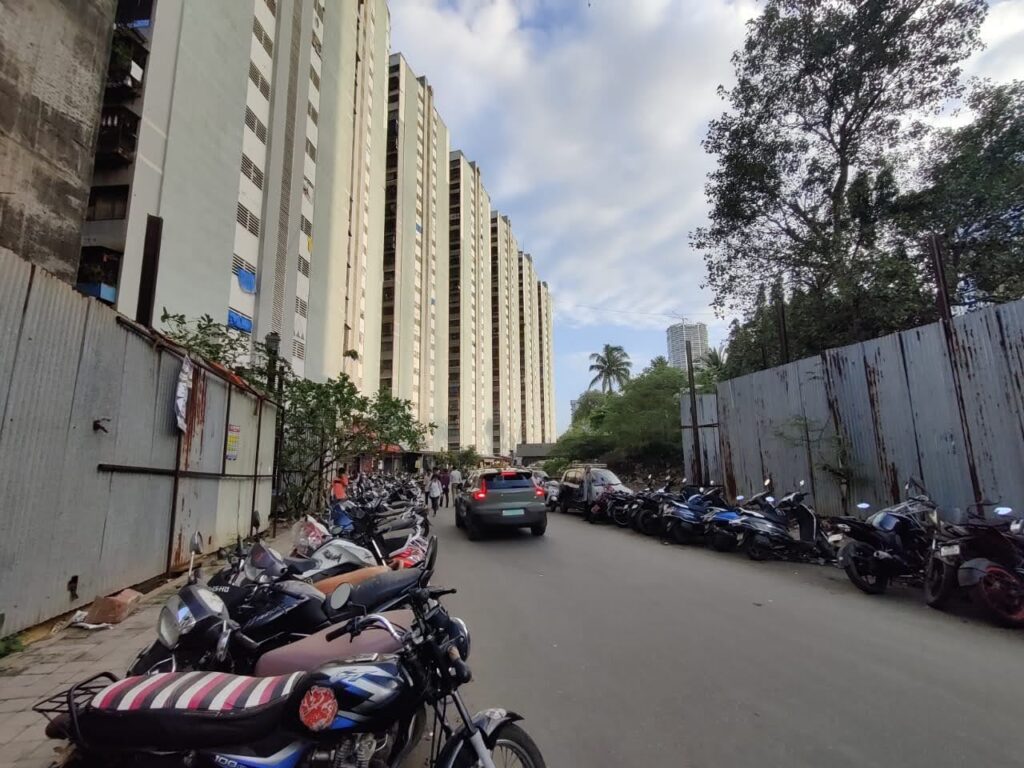
Photo: QoC file
Consent masks control
With this approach to land use, the slum redevelopment scheme of the Government of Maharashtra, now adopted by other state and city governments, has become a clever way to capture slum-occupied land by real estate businesses. This ‘land engineering’ is backed by the ‘manufactured consent’ of slumdwellers, to paraphrase public intellectual Noam Chomsky. It is rooted in the idea that “those who are being subjected to governing have authored their own subjection or ‘consent to be governed’… (and) the government exercises authority and power by the few over the many while sublimating oppression and eviscerating the everyday dignity and struggles of the many,” as academic HTL Quan noted in her book Become Ungovernable.[3]
This manufactured consent characterises free housing which itself is a blatant lie. Slumdwellers want redevelopment to move out of the miserable conditions they live in but are rehabilitated in untenable and unaffordable high-rises which are squeezed into one-third of the land their slum occupied. The rehabilitation buildings, which the Bombay High Court referred to as ‘vertical slums’[4] violate the basic norms of density, light, ventilation, have no open spaces and amenities, which severely affects residents’ health, and well-being.
This model of redevelopment hands over slum settlements to builders without ensuring effective form of community participation and control. The builders, with the government’s backing, displace residents from their social, cultural and political contexts and obtain their consent. It is, in effect, people’s consent for the capture of public land. Private developers are not interested or mandated to serve public interest. They use the land merely to facilitate their turnover and maximise profits. Therefore, despite 30 years of this model at work, affordable housing remains a pipedream.
This now appears to be a self-perpetuating cycle and the government falling to a self-created trap as redevelopment or reconstruction happens every 25-30 years with higher Floor Space Index and other incentives. With such an approach, redevelopment gets buried under its own debris while slumdwellers are denied their rightful share of land. This was described by Frederick Engels in The Housing Question, way back in 1873: “In reality, the bourgeoisie has one method of settling the housing question after its fashion—that is to say, of settling it in such a way that the solution continually poses the question anew”.[5]
The nature of such land use and privatisation has monumental impacts on not only the people in question but the quality of public life itself—it undermines rights and the democratic way of life. This phenomenon can be overcome by considering land as a common property resource, not private, and land use plans prepared with public participation and consent with the larger purpose of social and environmental sustainability.
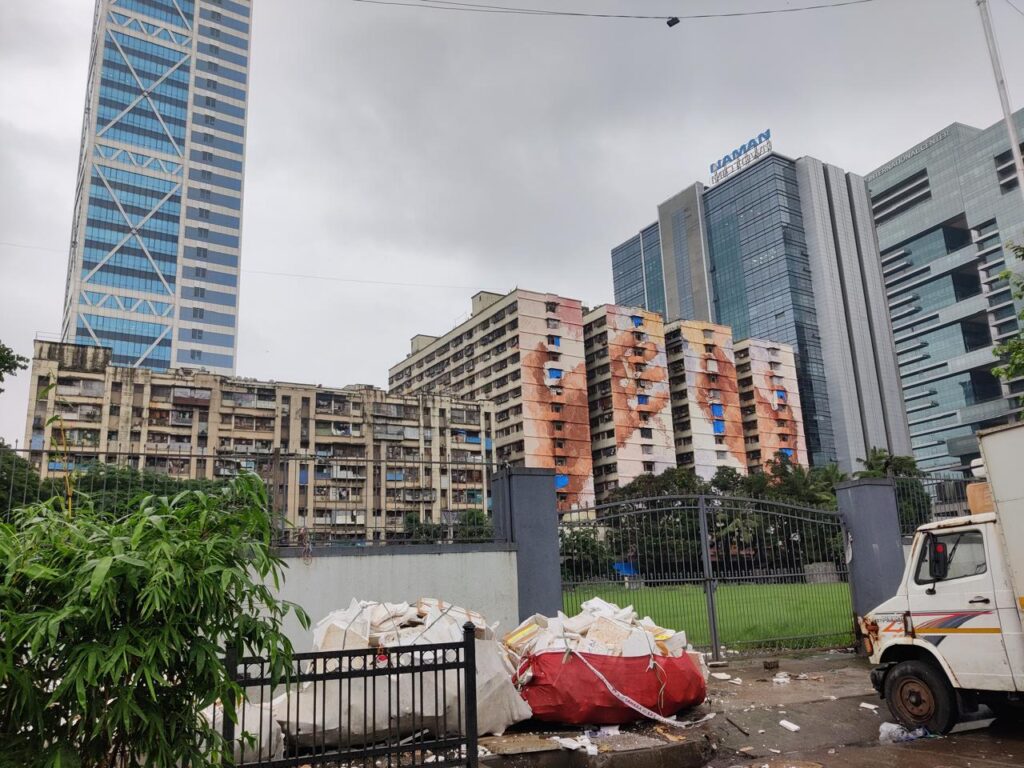
Photo: QoC file
Land pulled away from under our feet
In cities, land that’s not explicitly cordoned off, has been occupied by people historically excluded from the planning and development process. For millions who live in slums, slums are the only affordable option. In Mumbai, this is nearly half the population.[6] Over the years, long struggles for their right to housing forced successive governments in Maharashtra to enact and implement policies such as the slum redevelopment scheme.
In effect, the scheme did not recognise slum-occupied lands or allow the realisation of their potential to fulfil the need for affordable housing shortage pegged at about one million. Two-thirds of every slum plot redeveloped under the scheme, mostly public land, has been used for high-value projects traded in the open market. Thus, as we watch, vital public land is being snatched. Such private profit-oriented land redistribution, besides creating ‘vertical slums’, is caught in a web of contradictions—it leaves no land for public housing in the future perpetuating the cycle of its shortfall and, possibly, more ‘slummification’ of the city.[7]
Not free, public pays
The transfer of land to private developers, two-thirds to be sold by them at market rate, has been justified in the name of providing ‘free housing’ to the rehabilitated slumdwellers. But this is a myth. Firstly, the government spends from the public exchequer for the infrastructure and various services on that plot of land— water supply, sewage system, stormwater drainage, roads, power supply. Then, land is virtually free for the developer.
In the case of Dharavi redevelopment, the premium over the land cost has been exempted and the government is set to waive Rs 45-crore stamp duty too.[8] This exhaustive list of ‘gifts’ to private developers is their bonanza while the public bears the burden. But no regulation governs or controls the sale prices of the real estate developed on two-thirds of the plot and sold at market rates. This puts the large number of houses built beyond the reach of most people while the shortfall continues to haunt our cities. This model is becoming the default in other cities too.
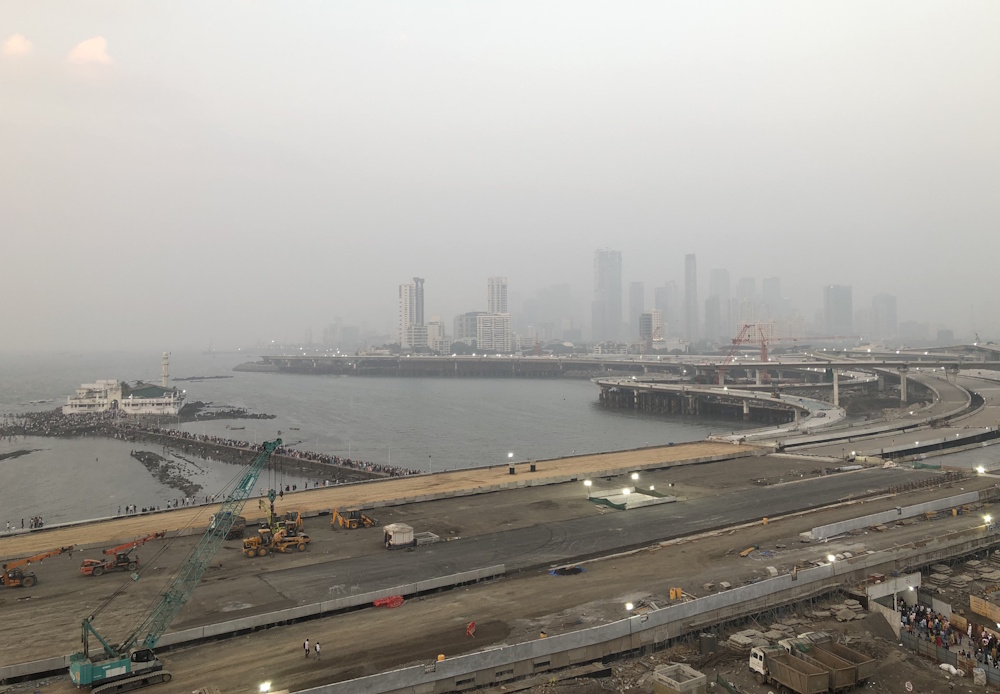
Photo: Wikimedia Commons
This pattern of land use has not promoted public good but has furthered marginalisation and displacement. It must stop. Land must be considered a public resource and pooled for public interest plans. I would go so far as to suggest that land is nationalised. “The nationalisation of land a ‘social necessity’ against which no amount of talk about the rights of property can be of any avail. The imperative wants of society will and must be satisfied, changes dictated by social necessity will work their own way, and soon or later adopt legislation to their interests,” wrote Marx.
As an immediate step forward, it is necessary to reserve slums-occupied land in cities, besides other vacant public land, for public housing and related amenities. Also, it must be mandatory to protect the price of such land parcels from the vagaries of the market. Equally importantly, all the existing realities of land occupation and multitude of activities, including “the informal”, must be recognised and made the basis of land use and city planning.
This model of land use will minimise multiple social and class conflicts, and spatial differences. And it can help achieve a harmonious built-form and aesthetics of the city too.
PK Das is an urban planner, architect and activist with more than four decades of experience. He has been working to establish a close relationship between his discipline, urban ecology and people through a participatory planning process. He has received numerous awards including LSE Urban Age award and the prestigious Jane Jacobs International Medal for his work in revitalising open spaces in Mumbai, rehabilitating slums and initiating participatory planning process. He is the founder of Question of Cities.
Cover photo: Aerial view of Khetwadi in Mumbai, a dense urban settlement.
Credit: Wikimedia Commons

